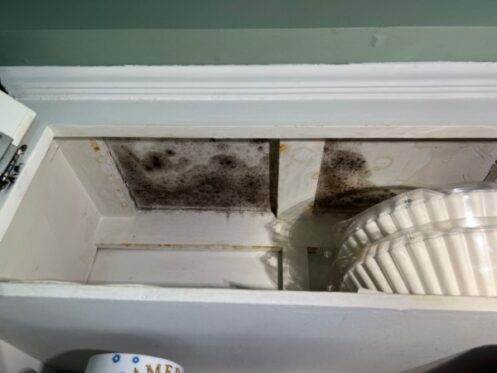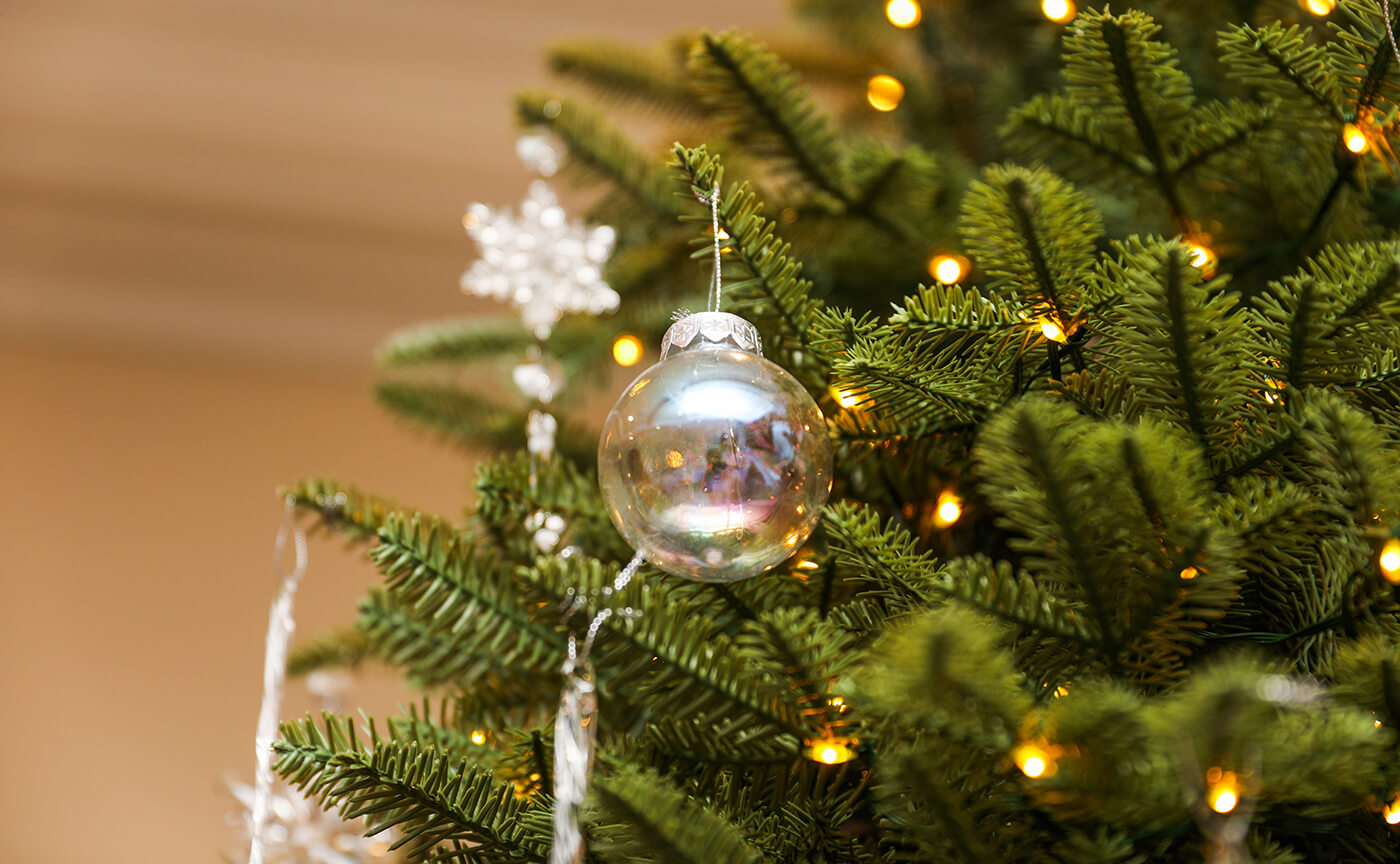Mold is virtually everywhere, but not all types of mold are alike. Some can cause serious health problems, while others may be more of a nuisance. Understanding the different types of mold is crucial for managing indoor air quality and addressing potential health risks. Here’s an in-depth look at 12 types of mold homeowners might encounter.
Acremonium
Category: Toxigenic
Acremonium’s appearance changes throughout its lifecycle. It starts as a moist spot and matures into a powdery texture, with colors varying from white and gray to orange and pink. Acremonium is often found in HVAC systems, humidifiers, and areas prone to condensation.
This mold is toxic and known to affect immune function with prolonged exposure. Inhaling its spores can lead to respiratory infections and other health risks, like deterioration of bone marrow and other vital organs, particularly in immunocompromised individuals. Therefore, if detected indoors, it is crucial to address it quickly.
Alternaria
Category: Allergenic
Alternaria is one of the most common allergenic molds. It appears as a velvety, green, or brown mold with small, hair-like structures. Alternaria spores can attach themselves to any damp surface, like leaky pipes, bathtubs, and sinks.
Often originating outdoors, Alternaria can quickly spread indoors, especially in areas with high humidity. Its airborne spores may lead to allergy symptoms, such as itchy eyes, sneezing, and respiratory issues like asthma.
Aspergillus
Categories: Allergenic, Pathogenic
Aspergillus is a mold with over 185 species, ranging in color from green to black and yellow. It often forms flask-shaped spores that grow in clusters on food, wood, and air conditioning units.
Some Aspergillus species produce harmful mycotoxins, like aflatoxin, which can pose serious health risks, including respiratory infections, asthma, and inflammation. Individuals with compromised immune systems are especially vulnerable to its effects.
Aureobasidium
Category: Pathogenic
Aureobasidium thrives on wooden surfaces, wallpaper, and painted areas. Its tendency to grow on both painted and organic materials makes it a frequent mold type in older or moisture-damaged buildings. It can be identified by its pink, brown, or black color, which darkens over time.
It’s known for causing skin irritation and eye infections. Prolonged exposure may also cause respiratory issues. Exposure to Aureobasidium can lead to dermatitis and other infections, so professional removal is recommended.
Chaetomium
Category: Demataceous
Chaetomium mold often presents as cotton-like patches that begin white or gray and gradually darken, eventually turning black. It has a distinctive musty odor and thrives in damp areas like leaky basements, under sinks, or around damaged roofing. Over time, this mold can become invasive, growing on drywall, carpets, and other materials.
Chaetomium, with its potential to cause skin and nail infections and respiratory problems, should be handled with caution. To minimize health risks, it’s best to avoid touching Chaetomium with bare skin and to have it removed by professionals.
Cladosporium
Category: Allergenic
Cladosporium is a non-toxic mold that can grow in both warm and cold environments. It appears as green or black pepper-like clusters. It’s commonly found on painted surfaces, air ducts, and fiberglass, as well as in bathrooms and on the back of toilets.
Although generally non-pathogenic, Cladosporium may still trigger allergic reactions, like skin rashes, sore throat, or watery eyes, particularly in people with sensitivities. It is resilient in cooler areas, making it a common nuisance in homes.
Fusarium
Categories: Toxigenic and Allergenic
Fusarium is commonly found in colder environments, often appearing on items like food, compost, fabrics, wallpaper, and carpets. Recognizable by its red, pink, or white coloration, this mold can spread rapidly on damp surfaces, especially after flooding.
Exposure can cause a range of symptoms, such as dermatitis, eye irritation and infections, a sore throat, and sneezing. In severe cases, prolonged exposure can lead to more serious health issues, like brain abscesses, hemorrhage, or even bone infections.
Mucor
Category: Allergenic
Mucor mold typically appears in damp areas prone to condensation, like AC units, leaky openings, and wet carpets, where it forms thick white or gray patches. Never try to handle white or gray mold without safety gear. It’s best to call a professional to manage this potentially dangerous mold.
Exposure to Mucor spores can be harmful, potentially causing flu-like symptoms, respiratory difficulty, fever, and malaise. For those with weakened immune systems, it can even lead to severe infections like mucormycosis, which can damage the lungs, brain, and sinuses.
Penicillium
Category: Allergenic
You may recognize the word “Penicillin” as a common antibiotic, which is derived from Penicillium mold. This mold often thrives on damp surfaces, such as carpets, mattresses, wallpaper, and HVAC ducts. After water damage, Penicillium can spread quickly, forming colonies with a velvet-like blue-green texture. It’s especially common in basements and around water-damaged insulation.
It releases airborne spores that can lead to respiratory problems and trigger allergies. Regular cleaning can help, but if you notice a fast-spreading colony, contact mold specialists for effective removal.
Stachybotrys
Category: Toxigenic
Often referred to as “black mold,” Stachybotrys is toxic and recognizable by its slimy, dark green or black appearance. It commonly occurs in wet, humid areas where it thrives on cellulose-rich materials like wood, drywall, and cardboard.
Stachybotrys releases harmful mycotoxins. Long-term exposure can lead to serious health effects, including respiratory issues and sinusitis. It can even lead to depression, chronic fatigue, and headaches. Stachybotrys is also associated with pulmonary bleeding in infants and a host of neurological problems in children.
Trichoderma
Category: Opportunistic, Pathogenic
Trichoderma appears as a white mold with patches of green. It has a woolly texture that becomes more compact over time. This mold often grows in damp areas like bathrooms and kitchens, where it releases spores that can cause allergies and worsen respiratory conditions. Certain strains of Trichoderma also carry enzymes that degrade building materials, leading to weakened and crumbling wood or drywall.
There are five distinct species of Trichoderma, some of which are pathogenic, causing pulmonary and hepatic liver infections. While beneficial in some soils, Trichoderma’s indoor presence is problematic, making professional remediation essential for long-term home health.
Ulocladium
Categories: Allergenic, Opportunistic
Ulocladium is often found after water damage, thriving in bathrooms, kitchens, and basements. Its black coloration can make it easy to confuse with other molds, and it commonly appears with molds like Chaetomium and Stachybotrys. Ulocladium requires close monitoring in damp areas to prevent it from spreading. Professional inspection can help distinguish it from other types and guide effective removal.
When inhaled, its spores can trigger reactions like hay fever, such as sneezing, runny nose, and itchy eyes. Prolonged exposure to Ulocladium, especially in a poorly ventilated, damp environment, may exacerbate asthma symptoms or cause coughing and breathing difficulties.
Knowing how to recognize the mold types can help you take the right action to prevent or address any infestations. Each type requires different methods for removal, making it essential to work with professionals who can accurately identify and treat the specific mold types in your home. Pur360 will safely and effectively get rid of the mold in your home using our patented technology.



